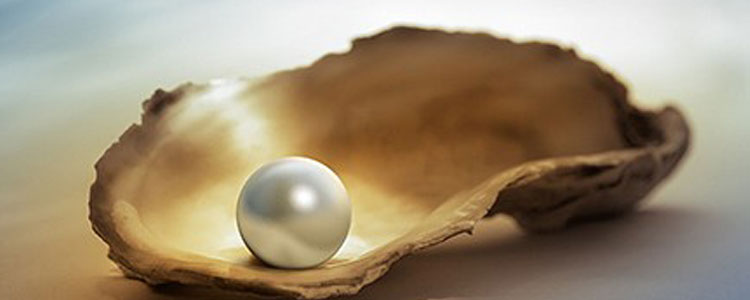Pearls have been among the most valued gems in the world. Symbolizing purity and chasity, they’ve not only been
If you’re in the habit of buying pearls, your most fundamental question when buying from an unknown dealer would probably be “Is this a genuine pearl?”. With a huge variety of pearls available in the market today, it’s easy to get carried away by imitation pearls which are made to look as beautiful and expensive as real pearls. Unless you an expert or have deep knowledge, it’s almost impossible for a layperson to tell the difference. So a basic knowledge of how to distinguish between the two could go a long way in making a purchase decision.
As you would be aware, fake pearls are man-made, where beads of glass, ceramic or plastic are often coated with varnish or some other material to give it a fake lustre. Natural pearls on the other hand are produced by a living creature.
Table of Contents
Quick Tips to Help You Distinguish a Real Pearl from a Fake One
Touch Test
Real pearls are always colder than the surrounding temperature unless worn on the body. Even when the weather is warm, real pearls will feel cool. Fake pearls, on the other hand, will not be colder than room temperatures. This you can tell by touching.
Weight Test
Real pearls are heavier. Fake pearls are lighter. The nacre that makes up the layers of a real pearl is very dense, so it will weigh a bit more than plastic or resin – the common materials used in many fake pearls.
Light Test
When put under light, real pearls perfectly reflect the light whereas fake pearls won’t reflect so much light. (You can see in many pictures in this website where pearls are reflecting the light, so is the reason, it is hard to get the exact colour of the pearl in the pictures).
Shape and Size
Real Pearls are not perfect in shape and size. Hence no two pearls match with each other (in same string). There will be minor variations in their shape, size and shade. Fake pearls are perfectly rounded and have identical sizes.
The Tooth Test
Rub a real pearl against your front teeth. If natural, you will feel a slight irritation or roughness. Fake pearls do not irritate.
Bounce Test
When you drop the pearl from 60 cm height on a piece of glass and the rebound height is around 35 cm, it’s a real pearl. Under the same test conditions, imitation pearls’ rebound height is far worse.
The Fire Test
Burn a pearl for sometime and then turn it off. After wiping off the black burnt coating, you can still see the real pearl inside. A fake pearl won’t look anything other than coal after burnt.
Knife Test
Take a knife or a blade and scrape off some powder off the pearl, you should get a soft and smooth powder. Still, you will see the lustre. For fake pearl, the outer layer will be gone and see the internal plastic material. The powder won’t be smooth too.
You can do some of these tests when you are at the store. However, it may not be possible when you buy them online. That’s why it’s important to go to a trusted and established dealer like PurePearls, who sell only genuine high-quality freshwater pearls. Pure Pearls gives you a 100% lifetime guarantee on every pearl. Besides, you will also get a certificate to validate the quality.

